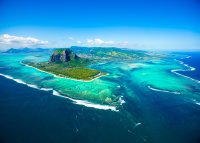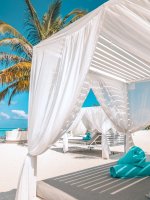AAPRAVASI GHAT (1 Quay St; % 217 2481; aapravasighat.org; ( 09.00–16.00 Mon–Sat; admission free). Free guided tours take you around the buildings of the immigration depot built in 1849 to receive indentured labourers, now a UNESCO World Heritage Site. Between 1834 and 1923 almost 500,000 indentured labourers arrived in Mauritius to replace the labour lost following the abolition of slavery in 1835. While many worked in the island’s sugar plantations, others were transported from Mauritius to other British colonies. The majority came from India but some also arrived from southeast Asia, Madagascar and east Africa.
The depot originally consisted of a gatekeeper’s office, hospital block, kitchens, immigration office, other staff offices, sheds, stables and privies. Today only parts of it remain, including the gatekeeper’s office, hospital block, wharf steps and immigrants’ sheds. On a guided tour you will walk up the steps, as those early immigrants did when they disembarked their ships, and then wander around the remaining stone buildings.
MAURITIUS MUSEUM COUNCIL (Mauritius Institute Bldg, Chaussée St; % 212 0639; f 212 5717; mauritiusmuseums.com) A complex containing a number of museums, including a natural history museum, an historical museum and a cultural centre.
NATURAL HISTORY MUSEUM (Mauritius Institute Bldg, Chaussée St; % 212 0639; f 212 5717; e mimuse[at]intnet.mu; mauritiusmuseums.com; ( 09.00–16.00 Mon/Tue & Thu/Fri, 09.00–12.00 Sat; admission free) It is certainly not the most modern or high-tech museum but still worth a visit for its exhibits on the natural history of the Mascarenes. The natural history museum was established in 1826 and moved to its current site 1885. Its most famous display is a goose-down-clad dodo replica; there are also skeletons of a dodo and a Rodrigues solitare. Numerous other displays on animals, birds and marine life, extinct or otherwise, are to be seen.
PHOTOGRAPHY MUSEUM (Old Council St; % 211 1705; e photomuseemaurice[at]yahoo.com; ( 10.00–15.00 Mon–Fri; admission adult/child Rs200/100) In a restored street on the opposite side of Jules Koenig Street to the theatre. An intriguing little private museum containing old cameras and prints of Port Louis in colonial days, many showing horse-drawn taxis. One photograph, dated 1956, shows the last passenger train leaving Curepipe for Port Louis. A highlight is the daguerreotype, the first commercially successful photographic apparatus, developed in 1839 by Jacques Daguerre. It created an image of a silver-surfaced copper plate but the process was superseded by other technologies and had almost completely died out by the 1860s. Mauritius received its first daguerreotype in 1840, just six months after France bought the licence from Daguerre.
BLUE PENNY MUSEUM (Le Musée, Caudan Waterfront; % 210 8176; f 210 9243; e bluepennymuseum[at]intnet.mu; bluepennymuseum.com; ( 10.00–17.00 Mon–Sat, last entry is at 16.30; admission adult/child Rs225/100) The stamp collection includes the famous ‘Post Office’ stamps issued in 1847 (see box Philatelist’s heaven, pages 108–9). Paintings, photos, documents and nautical charts from the island’s colonial days are also on display, and the museum provides a good history of Port Louis. The shop sells books on the Mascarene Islands and souvenirs.
POSTAL MUSEUM (Quay St; % 213 4812; e postalmuseum[at]mauritiuspost.mu; mauritiuspost.mu; ( 09.00–16.00 Mon–Fri, 10.00–15.30 Sat; admission adult/child Rs150/90) Within a stern Victorian granite-block building on the waterfront that once served as a public hospital. The neatly laid-out museum displays cancelling machines, letter boxes and vending machines, as well as stamps. Most of the really famous rare stamps that you see here are reproductions, although there is an original penny black. Souvenir packs of stamps, letter openers, paperweights and other objects with a postal theme are on sale.
MIKADO SHELL MUSEUM (6 Sir William Newton St; % 208 1900; e Mikado[at] intnet.mu; ( 09.00–17.00 Mon–Fri, 09.00–13.00 Sat; admission free) Above the jewellery shop, this is one of the most significant shell collections in the Indian Ocean – some 3,000 shells from around the world.
SSR MEMORIAL CENTRE FOR CULTURE (87 Sir Seewoosagur Ramgoolam St, Plaine Verte; % 242 0053; ( 09.00–16.00 Mon, Tue, Thu, Fri, 09.00–12.00 Sat; admission free) This house, where Sir Seewoosagur Ramgoolam lived from 1935 to 1968, contains exhibits on the life of this much-loved former Mauritian leader. The centrepiece is a photographic exhibition showing significant events in his life. At the time of writing, the museum was closed for renovation.
PERE LAVAL’S SHRINE (Ste-Croix; % 242 2129) Father Jacques Desiré Laval (known locally as Père Laval) was born in France in 1803 and brought up in a strict religious atmosphere, qualifying as a medical doctor before becoming a priest. In 1841, he arrived in Mauritius as a missionary and converted thousands of recently freed slaves to Catholicism, becoming known as the Apostle of the Blacks. He died on 9 September 1864. He was beatified in 1979, following Pope John Paul II’s visit to Mauritius, and is regarded as the island’s ‘national saint’. He is venerated by followers of all faiths who attribute miraculous healing powers to his name. Throughout September, and particularly on the anniversary of his death, people from around the world flock to his tomb in Ste-Croix, many in hope of a miracle healing. The tomb can be visited at any time of year. A rather gaudily coloured plaster effigy covers it. Ste-Croix is a suburb of Port Louis and is easily reached by bus from the Immigration Square bus station.














